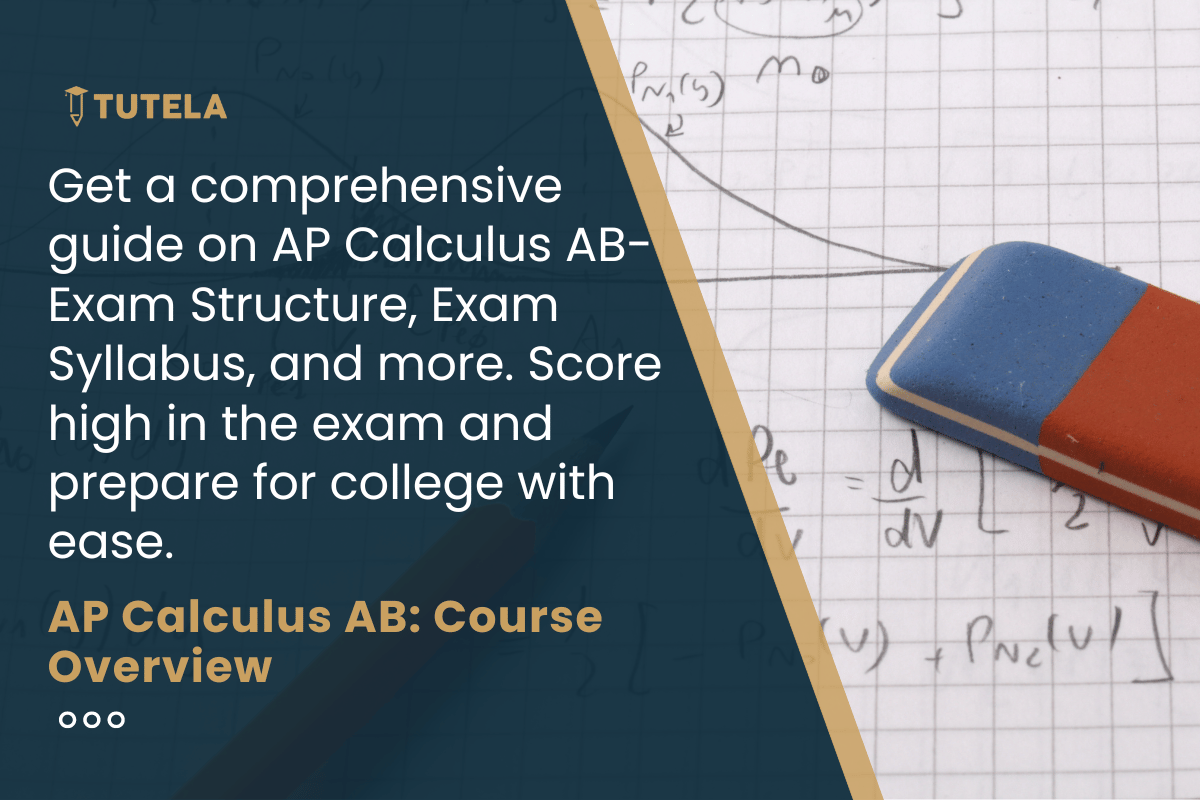
Welcome, Math Enthusiasts, to an Enlightening Exploration of AP Calculus AB! Whether you're gearing up for the AP exam or unraveling the intricacies of limits, derivatives, and integrals, get ready for a rewarding journey. The AP Calculus AB Exam is scheduled for 13th May 2024.
In this blog, we aim to be the go-to guide for students, breaking down the entire syllabus of AP Calculus AB in a concise and engaging manner. From fundamental concepts to advanced calculus, we'll navigate the essential principles of mathematical analysis.
| Unit Name | Description | Weightage in the Exam |
| Unit-1: Limits and Continuity | This unit focuses on understanding the concept of limits, which describe the behavior of functions as inputs approach specific values. It also introduces continuity and examines the properties of continuous functions. | 10-12% |
| Unit-2: Differentiation: Definition and Fundamental Properties | This unit helps the students in defining the derivative as the rate of change of a function and explores the fundamental properties of derivatives. It involves differentiation rules for various types of functions. | 10-12% |
| Unit 3: Differentiation: Composite, Implicit, and Inverse Functions | This unit extends the study of differentiation to composite functions, implicit functions, and inverses. It also covers the application of chain rule and implicit differentiation. | 9-13% |
| Unit 4: Contextual Applications of Differentiation |
This unit helps in applying the concept of differentiation to real-world scenarios. It also examines the interpretation of derivatives in terms of motion, rates, and other contextual situations. |
10-15% |
| Unit 5: Analytical Applications of Differentiation | This unit helps in utilizing derivatives to analyze the behavior of functions. It covers optimization problems, related rates, and other applications. | 15-18% |
| Unit 6: Integration and Accumulation of Change | This unit introduces the concept of integration as the reverse process of differentiation. It involves finding antiderivatives and understanding the definite integral. |
17-20% |
| Unit 7: Differential Equations | This unit focuses on differential equations and their solutions. It covers the application of calculus to model and solve real-world problems involving changing quantities. | 6-12% |
| Unit 8: Applications of Integration | This unit explores the various applications of integration. It involves finding areas under curves, volumes of solids of revolution, and other practical applications. | 10-15% |
1. Multiple-choice section: This section comprises 45 questions and lasts for 1 hour and 45 minutes. It is divided into 2 parts: Part A: 30 questions in 60 minutes (calculator not permitted). Part B: 15 questions in 45 minutes (graphing calculator required). It covers various topics, including limits, derivatives, integrals, and their applications.
2. Free-response section: This section consists of 6 questions and lasts for 1 hour and 30 minutes. It assesses students' ability to solve calculus problems and communicate their understanding through written responses.
1. Mathematics: Essential for students pursuing majors in mathematics, AP Calculus AB provides a solid foundation for advanced mathematical studies.
2. Physics: Calculus is fundamental for physics majors, assisting in the understanding of concepts such as motion, forces, and differential equations.
3. Engineering: Calculus is a cornerstone of engineering education, contributing to the analysis and design of systems in various engineering disciplines.
4. Computer Science: The analytical and problem-solving skills developed in AP Calculus AB align with the requirements of computer science majors, especially in algorithm development and analysis.
5. Economics: Calculus is applicable in economic modeling and analysis, making it valuable for students pursuing majors in economics.
6. Actuarial Science: Actuarial science majors benefit from calculus skills in modeling and analyzing risks related to insurance and finance.
7. Data Science: Calculus plays a crucial role in data science, aiding in the understanding of mathematical models and algorithms used in data analysis.
8. Biology: Calculus is useful in the analysis of biological systems, including population dynamics, genetics, and ecological modeling.
9. Chemistry: The principles of calculus find applications in chemical kinetics, thermodynamics, and quantum chemistry, making it beneficial for chemistry majors.
10. Environmental Science: Calculus is relevant to environmental science majors, particularly in modeling and analyzing environmental processes.
TutelaPrep’s College Navigator allows students to search for colleges based on their preferred country and course. Not only that, it also provides valuable insights into each college’s specific admission requirements for those exams. Through College Navigator, you can even connect with alumni at your chosen colleges to get a firsthand feel for campus life and academics.
We hope this article helped you with the subject knowledge. Reach out to us by filling out our assistance form if you need any help with the preparations.